Hillary Clinton delivers painful concession speech
New York (CNN)"I'm sorry."
New York (CNN)"I'm sorry."
美國共和黨總統候選人川普(Donald Trump)揚言,若當選總統,將在美墨兩國邊境修建一堵高牆,阻擋墨西哥移民,還要讓墨西哥政府買單。他的「驚人之語」至今仍讓世人津津樂道。

當初沒人把川普說的話當回事,認為只是他這個「嘴砲」商人兼實境秀主持人,為了吸引注意的反智言論,最終只會是曇花一現。想不到,一年多來,他正是靠著這種「胡言亂語」一路過關斬將,不但殺出重圍成為共和黨總統候選人,而且頻頻靠著「泥巴戰術」把民主黨總統候選人希拉蕊(Hillary Clinton)搞得狼狽不堪。

當然,希拉蕊也有讓人側目的言論,例如說,她曾公開稱川普的支持者中有半數是「一籮筐的可悲之人」,引來強烈批評。此外,她還稱川普是俄羅斯總統普京(Vladimir Putin)的傀儡,奧蘭多夜店槍擊案的兇手就是來自川普的老家等等的言論。


究竟「川普現象」的本質是什麼?反智主義是其中一大特徵,川普的口無遮攔,說些蠱惑人心的話,提出荒誕的建議,經常讓人覺得他馬上就要被「三振出局」,沒想到卻一路勝利,直衝總統大位 。
美國歷史學家霍夫斯達(Richard Hofstadter)在其《美國生活中的反智主義》(Anti-Intellectualism in American Life)一書中指出,美國人有著根深蒂固的反智主義傳統,呈現像在兩個方面:對於知識的反對或懷疑和對於知識分子的懷疑和鄙視。

然而選舉的初衷卻是,選出一個對人民負責、對國家負責,有智慧、有能力的領袖。而反智主義卻反其道而行之,因此為了迎合這種反智傳統,政客們各出奇招。他們有些是「真傻」,有些是「裝傻」,或是兼而有之,但目的都是為了搶選票,為了贏得選舉,他們可以裝瘋賣傻,沒有底線。

縱觀美國選舉歷史不難看出,反智主義並非川普「獨家秘訣」,而是源遠流長。有學者分析發現,自上世紀60年代開始,美國政治反智主義的傾向暗流洶湧,他們反對書本、反對知識、反對媒體,有些政客把自己塑造成「無知愛國」的代言人。

舉例而言, 2008年美國總統選舉,共和黨推出保守派前阿拉斯加州州長裴林(Sarah Palin)為副總統候選人,她反智傾向讓她快速走紅,她對對國內和國際事務幾乎一無所知,最有名的政見是,要把1200萬居留美國的非法移民拘捕遣送,把伊拉克戰爭稱之為「上帝賦予的任務」。
在網路新媒體時代,反智主義又有了新功能,那就是能讓政客瞬間成為「網路紅人」,吸引選票。例如川普就曾在推特上轉發義大利獨裁者墨索里尼的名言,當媒體追問此事時,他說:「這是誰的名言並不重要,重要的是能得到關注」。當然,希拉蕊也不甘示弱,不時拿川普的髮型與花邊新聞「開刀」,吸引民眾關注。

英國《金融時報》網站刊文指出,全球政治正轉變成「體制派」與「反體制」之間的對抗。在西歐的許多國家也出現同樣的模式,反體制的政黨抬頭,比如義大利五星運動黨、法國國民陣線、西班牙極左派的「我們可以黨」(Podemos)和德國右翼民族主義的另類選擇黨(AFD)等。
反智主義與反體制思潮異曲同工,「川普現象」所代表的反智和孤立主義思潮,本身也是今天美國選民對經濟、生存和安全恐懼的折射。美國貧富分化加劇,財富向少數人手裡集中。皮尤研究中心(Pew Research Center)的最新研究顯示,美國中產階級家庭所佔比例從1971年的61%減少到目前僅有49.4%。同時,2014年美國總收入的43%進入中產階級家庭,大幅低於1970年的62%;總收入的49%進入富裕家庭,大幅高於1970年的29%。
實際上,「反智主義」反的不是「智」,而是「有智的人」「有錢的人」,本質是平民階層對於精英主義的反抗。當人民對於現狀不滿時,便加深對政治精英的厭惡和不信任,參與投票往往只是為了賭氣,而非做出最有利的選擇。

在這場選舉中,對共和黨的批評也不少於川普,認為共和黨大方擁抱這種反智現象,利用其作為他們達成政治目標的手段。美國外交關係委員會(CFR)資深研究員布特(Max. Boot)就在《紐約時報》的投書指出,有人開玩笑說,「川普現象」是共和黨數十年來「裝笨」導致的後果,但若川普不幸當選,到時所有人都笑不出來。
即便川普沒能當選,也會為共和黨帶來「後遺症」,他們必須重新檢視黨內不斷滋長的反智現象,若只一味迎合民粹憤怒,擁抱極端分子絕對不是維持一個政黨的長久之計。

Samsung's second recall of its Galaxy Note 7 handsets is an unprecedented disaster for the company and the wider mobile phone sector.
There have been huge battery-related recalls before - Nokia had to ask consumers to send back 46 million batteries in 2007 because of overheating fears, but because they were removable it did not mean a well-reviewed flagship had to be scrapped.
"Stop using your device, back up your data and switch it off," the Samsung told Note 7 owners the day after it confirmed it had shut down its assembly lines following a spate of fires.
A compensation scheme is being put in place - users will be offered the choice of either getting all their money back or swapping the phablet for an older, smaller-screened Galaxy S7 or S7 Edge phone plus a partial refund.
But several questions remain unanswered.
When Samsung instituted the initial recall last month, it pointed to a "battery cell issue" being the cause.
A report sent by the company to regulators was more specific, saying a production fault had caused some of the batteries to be slightly larger than intended, which had put pressure on them when they were fitted inside phones, according to a leak reported by Bloomberg.
The issue was blamed on the components' manufacturer - Samsung SDI - and was supposed to have been fixed by putting batteries made by another company, ATL, in the replacements.
Now that several of that second batch of phones have overheated too, it is unclear whether the original problem was misdiagnosed.
According to the New York Times, Samsung's engineers were never able to get the phones to explode when they tried to recreate the fault.
"We are working with relevant regulatory bodies to investigate the recently reported cases involving the Galaxy Note 7," was the only comment a Samsung spokesman was willing to make on the matter.
Samsung has yet to reveal exactly how many Note 7s it made before pulling the plug on Tuesday.
On 2 September, the South Korean company said 2.5 million devices were subject to its initial recall.
On 27 September, it added that more than 60% of the Note 7s that had been sold in South Korea and the US had been replaced with new devices.
Those two countries accounted for the vast majority of the phones sold - only about 50,000 devices made it to Europe.
And the Note 7 only briefly returned to sale to new customers in South Korea last week.
All of which gives a rough tally of four million units.
IHS had originally forecast Samsung would have made about six million Note 7s by this point if all had gone according to plan.
It is less clear how many actually overheated
Samsung said it had received "35 reported claims" at the time of the first recall, and there were seven reports in the media of replacement models being affected.
Samsung has said it will take "all measures" to get the devices back.
For now, that involves sending emails and notifications to registered users.
At the time of the original recall, it also issued a software update that prevented some of the batteries from being fully recharged.
There is speculation that other restrictions - or a full lockout - could be imposed if users now refuse to give the devices up.
There is also the question of what Samsung does with the mountain of returned mobiles.
A spokesman declined to say whether it might strip them down and re-use components in other products.
But one environmental pressure group urged it act responsibly.
"Mobile phones have valuable and precious materials within them, the mining for which can cause significant environmental harm - and can sometimes be carried out in appalling working conditions in developing countries," said Friends of the Earth's policy director, Mike Childs.
"All phones should be 100% recycled at the end of their lives, or when they have to be returned due to faults.
"The environment shouldn't suffer because of the mistakes of mobile phone firms."
Many consumers bought cases, a Blackberry-styled keyboard cover, a wide-angle lens attachment and spare styluses and power packs for their Note 7s.
A spokesman for Samsung said it was still in discussions with vendors about how to cover these costs.
Some owners are also wondering if they will be offered extra cash for handing back the second-generation Gear VR virtual reality headset that was bundled with pre-orders.
It costs abut £100 to buy separately.
The spokesman said the company considered this to have been a "gift" but did not rule out some kind of additional compensation.
Samsung's Galaxy line-up used to distinguish itself against Apple's iPhones by allowing users to take off the phones' backs and swap out their batteries.
But the S6 and Note 5 phones changed that, helping Samsung offer more compact designs with added water resistance as a bonus.
Some people have pointed out Samsung might have avoided its current problems if it had not made that choice.
And it is notable its domestic rival LG has included removable batteries in its two current top-end models.
Unsurprisingly, Samsung would not comment on its future designs.
But one expert said all smartphone-makers would be reviewing their plans.
"There are greater power demands on modern smartphones - they have bigger, higher-resolution screens, faster processors, and 4G data - but there is also greater pressure to keep them very compact and also enable owners to charge them quickly," said Ian Fogg, from IHS.
"Those are competing demands.
"Everyone will be looking at their forthcoming smartphone launches and tasking their engineering teams to have another look at the way their charging and the batteries work to make sure they don't have the same problem.
"And Samsung will be looking at its upcoming models in a particularly close way, as it's possible they were set to share some of the same design elements as the Note 7."
 |
|
|
|
|
邁入第20屆的日本萬聖變裝遊行「KAWASAKI Halloween」,本周在川崎車站附近熱鬧登場,在眾多人經心設計的裝扮下,有的恐怖、有的搞怪、有的陰森,但其中還有最讓人「害怕」的裝扮。
日本網友「aaaya1l1ll021」捕捉到號稱「年度最恐怖萬聖節裝扮」,照片中可見,一隻超大型的三星Note7智慧型手機在街上遊走,螢幕上有多處燒焦痕跡,整隻機身可說是面目全非,試圖營造出今年爆炸頻繁的Note7氛圍。
文章發表後,引起各界關注,也傳至韓國、台灣平台,有網友說「有夠狂」、「哈哈!我承認我笑了」、「手機的細節超級寫實」、「我笑到肚子好痛」、「移動式炸彈的概念」,還有網友擔心侵權問題。
除了日本人扮演大型三星Note7外,國外網友也在臉書上分享自己的「萬聖節最恐怖的變裝」,並打上「這個萬聖節我將會成為一個自爆體!」,只見男子身上黏上6個三星Note7的手機包裝盒,男子拿起管子吹氣,6個盒子紛紛冒出白煙,彷彿隨時要爆炸。
可見今年最恐怖的萬聖變裝,三星Note7將成為年度贏家之一。

【川崎ハロウィン】Kawasaki Halloween 2016.10.30 Kawasaki,kangawa,Japan グループA
《網友觀點》Yahoo奇摩新聞歡迎您投稿!對於這個社會大小事有話想說?歡迎各界好手來發聲!用文字表達你的觀點。投稿去---->http://goo.gl/iRPx1B
Updated 0429 GMT (1229 HKT) October 20, 2016
(CNN)CNN contributor Van Jonesoffered his assessment of Wednesday'sthird presidential debate, doing so in colorful fashion.
(CNN)Donald Trump on Wednesday refused to say he would accept the result of the presidential election if he loses to Hillary Clinton, raising the possibility of an extraordinary departure from principles that have underpinned American democracy for more than two centuries.
(CNN)Donald Trump on Wednesday refused to say he would accept the result of the presidential election if he loses to Hillary Clinton, raising the possibility of an extraordinary departure from principles that have underpinned American democracy for more than two centuries.
Samsung 表示改良版 Galaxy Note 7 已開始出貨
作者Richy | Qooah – 2016年9月12日 下午11:08
早 前 Samsung 的新旗艦手機 Galaxy Note 7 出現的爆炸風波,令她們不得不進行回收,而且部份國家的航空單位及航空公司都拒絕用戶在飛機上使用 Galaxy Note 7、不能在飛機上為手機充電。甚至托運也不可,包括美國 FAA (聯邦航空委員會) 於上星期宣佈把 Galaxy Note 7 列入禁飛名單,托運也要受限。
對此 Samsung 日前於官方的 Twitter 上作出正式的回應,表示非常重視消費者的安全,同時更表示改良版 Galaxy Note 7 已經開始付運。
有媒體表示為使消費者容易識別改良版,會在包裝盒的產品條碼上右下印上一個黑色的小正方形圖案。而且也會在條碼附近貼上一個藍色英文字母 “S”。
如果大家要買 Galaxy Note 7 的話,記得認清楚不要買到舊版了。。。
此文章原刊於 Qooah.com
為您推薦更多相關文章:
board
Investigators inspect a bus carrying tourists from mainland China that crashed and caught fire along an expressway on its way to the airport in Taiwan's city of Taoyuan, July 19, 2016.
TAIPEI, Taiwan -- A tour bus carrying visitors from China burst into flames on a busy highway near Taiwan's capital on Tuesday, killing all 26 people on board, officials said.
The accident took place on the No. 2 national highway in Taoyuan county, south of Taipei, where the island's international airport is located, the county's fire and rescue service said in a statement.
It said 24 of those on board were visitors from China's Liaoning province who had been scheduled to fly home on Tuesday afternoon. The others killed were the driver and a tour guide, both Taiwanese.
The website of Taiwan's China Times newspaper said that no one aboard made it off the burning bus, and that many of the bodies had been badly charred.
Investigators inspect a bus carrying tourists from mainland China that crashed and caught fire along an expressway on its way to the airport in Taiwan's city of Taoyuan on July 19, 2016.
GETTY
There was no official word on the cause of the fire, although Taiwan's official Central News Agency and others reported that the bus apparently burst into flame after spinning out of control and smashing into the highway's guard rail. However, the exact sequence of events wasn't immediately clear.
Photos from the scene showed flames and thick black smoke pouring from the cab of the bus shortly after the crash.
Thirteen firefighting vehicles and 30 firefighters were sent to the scene, but the fire apparently spread too rapidly, and once the flames were extinguished, the vehicle was heavily blackened from one end to the other.
China has threatened to cut off regular communication with Taiwan unless the country's new president acknowledges the so-called One China principle.
According to a report from Xinhua, the Chinese state media outlet, China's Taiwan Affairs Office spokesman Ma Xiaoguang said on Saturday that only by Taiwan confirming the One China principle - which dictates that the island of Taiwan and mainland China are parts of a single Chinese state - could "cross-Strait affairs authorities continue regular communication."
Ma said the Chinese and Taiwanese authorities had had active interactions since at least 2014 through a hotline and other means, after establishing a regular mechanism that was based on a political agreement called the 1992 consensus.
Ma said the communications arrangement had allowed the countries "to contact each other in a timely fashion, avoid misjudgments, keep disagreements under control, and it was also conducive to enhancing understanding and mutual trust."
"With the operation of the regular communication mechanism, some 'impossibilities' in cross-Strait relations have become realities," Ma said, according to the Xinhua report.
Tsai Ing-wen, leader of the Democratic Progressive Party (DPP), which has traditionally favored independence from China, was sworn in on May 20, replacing China-friendly Ma Ying-jeou of the Nationalist Party (KMT). Ma had led Taiwan for the past eight years.
Although Tsai, Taiwan's first woman president, said in her inauguration speech on Friday that Taiwan would play a responsible role and be a "staunch guardian of peace" with China, that was considered by China to be insufficient acknowledgment of the One China principle.
After Tsai's speech on Friday, the Taiwan Affairs Office said Tsai's remarks were an "incomplete answer," while an editorial published on Saturday in the People's Daily, the official newspaper of China's ruling Communist Party, said that "Taiwan's new leadership must complete their currently incomplete response."
"We will not only listen to what she says, but also see what she will do," the People's Daily said in its commentary, according to Xinhua.
China wants Tsai to explicitly endorse an interpretation of the One China principle that China says was agreed with the KMT under a framework known as the 1992 Consensus.
According to China and the KMT, the 1992 Consensus, reached at a meeting that year between semi-official representatives of the two countries, provided a tacit understanding that the geographic territory of Taiwan belonged to mainland China but that both countries were free to pursue their own interpretation of what "One China" meant.
But Tsai's DPP does not accept that there was, in fact, a consensus in 1992.

A four-year-old white Labrador called Dayko has been hailed as a hero after rescuing seven people from the aftermath of the Ecuador earthquake - before dying from exhaustion.
Dayko, a rescue dog for the Ibara fire service, died last Friday, having spent the previous days searching for survivors in the rubble left by the 7.8-magnitude earthquake which hit Ecuador last week.
According to a post on Ibara fire service's Facebook page the cause of death was "massive coronary myocardial infarction and acute respiratory failure." He had been working as a rescue dog for three and a half years.
"We regret to inform you that today the [fire service] is in mourning because [we] just lost Dayko who participated in the work of searching in Pedernales," said the fire service.
"This four legged friend gave his life in the line of duty. Thank you Dayko for your heroic efforts in Pedernales and in various emergencies where you were present.
"You held high the name of the K9 unit."
More than 2,000 people were injured in the quake on April 16, which ripped apart buildings and roads and knocked out power along the Pacific coastline. At least 654 people have been killed.
President Rafael Correa, said last week: "Reconstruction will cost billions of dollars," and the impact on economic growth "could be huge."
Around 500 specialists from Bolivia, Chile, Colombia, Cuba, Peru, Spain, Switzerland, the US, and Venezuela have been assisting local fire brigades and special forces. Supplies have been arriving by air from less-affected parts of Ecuador and survivors flown for treatment to Quito, the capital, and Guayaquil, the biggest city.
• At least 350 dead after powerful earthquake hits Ecuador

他 們或許不是「牽手」走得最長遠的夫妻、但可能是「牽手」走了最多地方的夫妻。在Instagram粉絲超過400萬的俄羅斯攝影師穆拉德(Murad Osmoanov )及妻子娜塔利(Nataly Zakharova),因發表一系列「Follow Me To」牽手照在網路發燒,被稱為「全球最閃夫妻」,最近閃照來台取景,101、阿里山、日月潭的牽手照,並且都標註了台灣地名,幾乎張張逾23萬個讚!
Murad 和Nataly去年底受丹麥品牌PANDORA之邀,來台為期8天的拍攝,走過屏東東港、參加王船祭,也到高雄佛光山祈福,台灣最著名的嘉義阿里山、南投 日月潭 、花蓮太魯閣和台北101。這兩天Murad上傳阿里山和日月潭取景的三張「台灣牽手照」,每張都超過23萬個讚,阿里山鐵道前的那張照片,更有近26萬 個讚。
今天觀光局證實,Murad和Nataly來台拍閃照,其實PANDORA也向台灣觀光局提 案合作。觀光局國際組科長鄭智鴻說,「其實一開始Pandora跟我們提案的時候,我們真的很驚訝」,當時提案中僅提到是要以台灣為主題拍攝新產品型錄, 但是最閃夫妻到底會不會把照片上傳Instagram,廠商也不敢跟觀光局保證。
「我們想說,那就賭一把吧!結果他們真的上傳了,短時間,按讚的人就超過25萬!」鄭智鴻高興地表示,觀光局在這次合作中,只有提供導覽、安排交通到各景點拍攝,卻有意想不到的收穫。
Murad 和Nataly的「Follow Me To」系列,最大的色特就是以城巿地標為背景、拍攝Nataly的背影與緊緊握著她但只「露一手」的Murad。此次在台灣拍攝共造訪屏東東港、高雄佛光 山、阿里山、南投日月潭文武廟、花蓮太魯閣、以及台北101,每張照片皆融入當地文化特色,美得令人屏息。
日前接受《GQ》雜 誌專訪時,夫妻倆都對台灣留下極好的印象。Nataly 說,「我們非常驚訝台灣這麼美,台灣人的親切,也讓我們念念難忘。在這次拍攝的作品中,我最喜歡以阿里山日出為背景的牽手照,當時天氣非常的冷,我們一直 在等天亮,等待最美的那一刻才按下快門,拍出來的效果讓我們相當滿意。」Murad則說,「日月潭那張攝影作品我也很喜歡,景觀太美了!」
Murad 同時也受邀以「A Journey of Love」為主題,在信義誠品舉辦攝影展, 展期到4月29日,地點在信義誠品館一樓大廳。

阿里山茶園

日月潭

101大樓
相關連結:


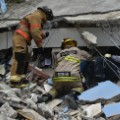

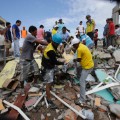
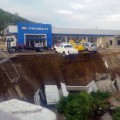
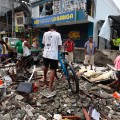
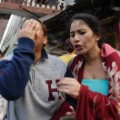
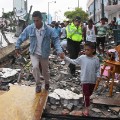

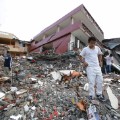
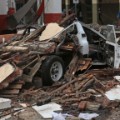

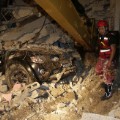
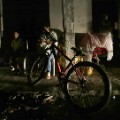
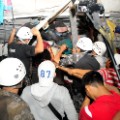

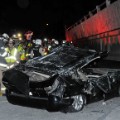
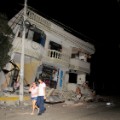
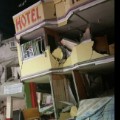

(CNN)Several million earthquakes occur annually, but most are unnoticed because they're so small, the U.S. Geologic Survey says.



















Updated 0200 GMT (0900 HKT) April 15, 2016
Tokyo (CNN)
At least nine people died when an earthquake struck Japan late Thursday, the Kumamoto Prefecture disaster management office said.













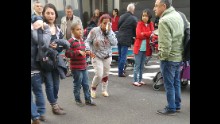

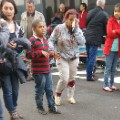
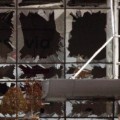
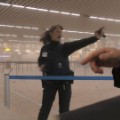
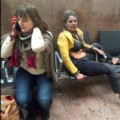
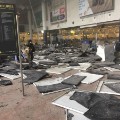
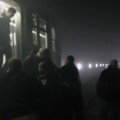
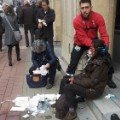
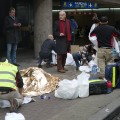
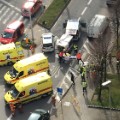


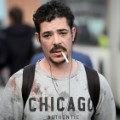
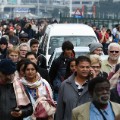
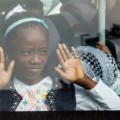
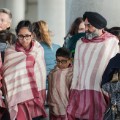


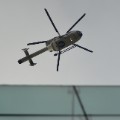
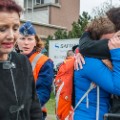
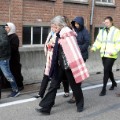
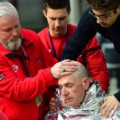
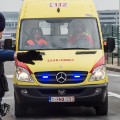
Peter Bergen is CNN's national security analyst, a vice president at New America and a professor of practice at Arizona State University. He is the author of the new book "United States of Jihad: Investigating America's Homegrown Terrorists." This article is adapted from parts of a previously published op-ed.
(CNN)On Tuesday morning, Brussels was hit by terrorist attacks at transportation hubs -- at the airport and at a subway station. Sadly, we have seen such multiple, deadly assaults on transportation targets in Europe before.
In London on July 7, 2005, four al Qaeda-trained British citizens bombed commuters traveling on three trains on the city's Underground and on a bus, killing 52. In Madrid the previous year, a group of largely first generation North African immigrants to Spain detonated bombs on commuter trains, killing 191.
A key to understanding to such attacks -- including Tuesday's in Brussels -- will be to examine the explosives used in the bombings.
French prosecutors say the bombs ISIS used in its November attacks in Paris that killed 130 were made from triacetone triperoxide, or TATP. If it turns out that the bombs in Brussels were made from TATP, it would tend to link the attacks directly to those in Paris.
TATP-based bombs are built using the common household ingredient hydrogen peroxide, which is used to bleach hair. Such bombs have been a signature of jihadist terrorists in the West for more than a decade because the materials are so easy to acquire, unlike military-grade explosives, which are tightly controlled in much of the West.
Their use in the Paris attacks, as well as in terrorist plots in London and in the United States over the past decade, should remind law enforcement in the West that these TATP bombs are what jihadist terrorists will continue to deploy.
What is tricky for those hoping to utilize such weapons is that TATP bombs are quite difficult to make because their ingredients, when combined, are highly unstable and can explode easily if mishandled. To make an effective TATP bomb requires real training, which suggests a relatively skilled bomb-maker was involved in the Paris plot, since the terrorists detonated several bombs.
The dangers of TATP bombs can be seen in the case of Matthew Rugo and Curtis Jetton, 21-year-old roommates in Texas City, Texas. They didn't have any bomb-making training and were manufacturing explosives in 2006 from concentrated bleach when their concoction blew up, killing Rugo and injuring Jetton. The pair had no political motives: They had just wanted to blow up a vehicle for fun.
Others in the United States have built TATP bombs with far more malevolent intent. Najibullah Zazi, who grew up in New York, wanted to blow up as many commuters as possible on the subway system in Manhattan.
Al Qaeda trained Zazi to make a TATP bomb in Pakistan, and during the summer of 2009, he made bulk purchases of hair bleach in suburban Denver and set up his bomb factory in a nearby motel room.
He mixed and cooked batches of hair bleach in the kitchenette of the motel. On the night of September 6, 2009, as he labored over the stove, Zazi sent several emails to an al Qaeda operative "Ahmad." The emails contained a well-known al Qaeda code for a terrorist operation being imminent -- "the marriage is ready" -- and also asked for specific instructions "right away, please" about the other ingredients needed for the explosive.
Zazi had mastered the manufacture of the hair bleach-based bombs, but he had forgotten the precise proportions of those ingredients needed to ignite the mixture.
If Zazi had sent these emails to an ordinary email account in Pakistan, anyone monitoring it would have assumed the query was about making a wedding cake. But the email address Zazi used to touch base with "Ahmad" was sana_pakhtana@yahoo.com, an account that British intelligence was monitoring because someone using it had also been in touch with al Qaeda recruits in the United Kingdom.
British authorities tipped off American officials that the email account belonged to an al Qaeda operative in Pakistan, and the U.S. National Security Agency began monitoring it.
Once the FBI realized there was an al Qaeda recruit living in Denver making TATP bombs, it intensively monitored Zazi. He traveled from Denver to New York to carry out his plan around the eighth anniversary of 9/11 and was soon arrested, as were two of his co-conspirators, all of whom were given long prison sentences.
More successful for al Qaeda was the cell of British suicide bombers who carried out the "7/7" London bombings. They used their training to heat up and distill ordinary hair bleach, combining it with other ingredients to make effective bombs. Making these bleach-based bombs was a complex process, not something that could be picked up by reading bomb-making recipes on the Internet. The ringleader had received bomb-making training from al Qaeda in Pakistan.
In an apartment the London plotters had rented to serve as their bomb factory, they mixed the chemicals. As they brewed up batches, they wore disposable masks because of the high toxicity of the materials, which bleached their dark hair a noticeably lighter color. They installed a commercial-grade refrigerator in the apartment to keep the highly unstable bomb ingredients cold. They built four devices.
Hydrogen peroxide-based bombs would again be the signature of a cell of British Pakistanis who plotted to bring down seven passenger jets flying to the United States and Canada from the United Kingdom during the summer of 2006. The plotters were intent on committing suicide during the attacks on the passenger jets. Six of them made "martyrdom" videotapes recovered by British investigators.
British authorities were tracking the ringleader intensively in the summer of 2006. When he was arrested in east London in August 2006, he was carrying a memory stick storing flight plans for United Airlines, American Airlines and Air Canada jets flying from the United Kingdom to destinations such as Chicago, Washington, Los Angeles, San Francisco, Montreal and Toronto.
Investigators later found several large bottles containing concentrated hydrogen peroxide that one of the conspirators had dumped in a London park. The plotters were planning to bring the liquid explosives disguised as soft drinks in hand luggage onto the flights they had targeted, together with other innocuous-looking items that could act as triggers. They had planned to assemble their bombs on the planes.
It was this plot that triggered airlines to ban almost all liquids being taken on flights.
As investigators try to piece together what happened in Brussels, they will surely be looking for where the bombs were assembled. They will also be trying to determine who built the bombs. Were they built by the terrorists themselves, as was the case with the London plotters, or did someone else build them? And where did the training to build the bombs happen? Was it in France, Belgium or in Syria, or in some other location? These are some of the questions that, hopefully, the investigation will eventually unearth.
After 9/11, the New York Police Department initiated Operation Nexus, in which officers visited thousands of stores in the city and the wider Northeast region that sold or distributed materials that could be used in a terrorist operation. It could be anything from pipes useful for pipe bombs to the explosive "black powder" that can be found in fireworks. Each store owner would be told, "If you see in an anomaly in a purchase, let us know."
Zazi was just such an anomaly, as he was a dark-haired, bearded Afghan-American man in his 20s who bought six bottles of Clairoxide hair bleach during one shopping trip at a store in a Denver suburb. Zazi returned to the store a month later and purchased another dozen bottles of Ms. Kay Liquid, which is also a peroxide-based hair bleach.
It's that kind of bulk purchase of hydrogen peroxide that should trigger a suspicious activity report in the United States and other Western countries.
Friday night's deadly attacks in Paris by gunmen and suicide bombers hit a concert hall, a major stadium, restaurants and bars, almost simultaneously - leaving at least 129 people dead and hundreds wounded.
The attacks have been described by President Francois Hollande as an "act of war" organised by the Islamic State (IS) militant group.
Shootings and bomb blasts left at least 129 people dead and hundreds wounded, with more than 100 in a critical condition.
"Three co-ordinated teams" appear to have been behind the attacks, according to Paris chief prosecutor Francois Molins.
French police have carried out more than 150 raids across the country, as the search for suspects continues. Raids have also taken place in the Belgian city of Brussels.
This is how the attacks happened.
The first of three explosions occurred outside the Stade de France stadium on the northern fringe of Paris where France were playing Germany in an international football friendly.
A man wearing a suicide belt was reportedly prevented from entering the stadium after a routine security check detected the explosives. According to the Wall Street Journal, the man backed away from security guards and detonated the explosives.
The bomber and a passer-by were killed.
The game, attended by President Francois Hollande, was being broadcast on TV. After a second man detonated his suicide vest outside a different stadium entrance at 21:30, the president was rushed to safety.
A third suicide bomber blew himself at a fast-food outlet near the stadium at 21:53. The attackers all wore identical explosive vests.
Shooting: Le Carillon
Meanwhile, other attacks were unfolding nearer to the centre of town, around popular nightlife spots. The first took place at about 21:25 in the 10th district (arrondissement), not far from the Place de la Republique.
According to the Paris prosecutor, witnesses thought the gunmen arrived at the scene in a black Seat car.
Witnesses at Le Carillon bar, 18 rue Alibert, said they initially thought a firecracker had gone off before realising that they were under fire from semi-automatic rifles.
"People dropped to the ground. We put a table over our heads to protect us," said Ben Grant, who was with his wife at the back of the bar.
Restaurant attack: Le Petit Cambodge
Witnesses describe how a man then crossed the road and turned his gun on a restaurant, Le Petit Cambodge (Little Cambodia).
Fifteen people died in the attack on the bar and restaurant, with 15 severely injured. More than 100 bullets were fired.
Then came an attack on diners a few streets south of rue Alibert, in front of the Cafe Bonne Biere and La Casa Nostra pizzeria in rue de la Fontaine au Roi. Five people were killed and eight were severely injured.
Again, witnesses reported that the gunmen were travelling in a black Seat.
The next reports of shootings came to the south of the first restaurant attacks, at La Belle Equipe bar in the rue de Charonne in the 11th district.
Witnesses again said that the attackers arrived in a black Seat. Two men opened fire on the terrace of the cafe.
"It lasted at least three minutes," one witness said. "Then they got back in their car and headed towards Charonne station."
Nineteen people died in the shooting, with a further nine in a critical condition.
Images of aftermath of shootings
Eyewitness accounts from the scene
A few minutes later, an attacker - later revealed to be Braham Abdeslam - killed himself by detonating a suicide bomb at the restaurant Le Comptoir Voltaire on the Boulevard Voltaire, the chief prosecutor said.
One other person was severely injured in this incident.
The deadliest attack of the night came at a concert venue on Boulevard Voltaire, also in the 11th district, where Californian rock group Eagles of Death Metal was playing. The 1,500-seat Bataclan hall was sold out.
The Paris chief prosecutor said three attackers wearing suicide belts were involved - earlier reports spoke of four attackers. Witnesses said they arrived in a black Volkswagen Polo then stormed in through the main entrance and into the back of the concert hall.
Eighty-nine people died as the men fired Kalashnikov-type assault rifles into the crowd. At least 99 others are in a critical condition in hospital.
What happened at the Bataclan?
'I saw people on the ground and blood'
One of the attackers was said to have shouted "God is great" in Arabic. One witness heard a gunman blaming President Hollande for intervening in Syria. It was the first clear evidence that Paris was once again being targeted by Islamists.
"We thought it was fireworks but then there were men shooting in all directions. So we all lay on the floor and started crawling towards the stage," one woman said.
Some escaped via an emergency exit to the left of the stage. Others managed to find a route onto the roof.
By now, President Hollande was in crisis talks with Prime Minister Manuel Valls as well as Interior Minister Bernard Cazeneuve. Mr Hollande announced a state of emergency throughout France and a tightening of border controls.
The order was then given to send elite security forces into the concert hall. As the operation came to a head, at about 00:20, a police officer shot one of the gunmen, and his suicide belt detonated. The siege ended with the other two blowing themselves up.
Two of the bombers have since been identified as Omar Ismail Mostefai, 29 and Samy Animour, 28. The third man has yet to be named.